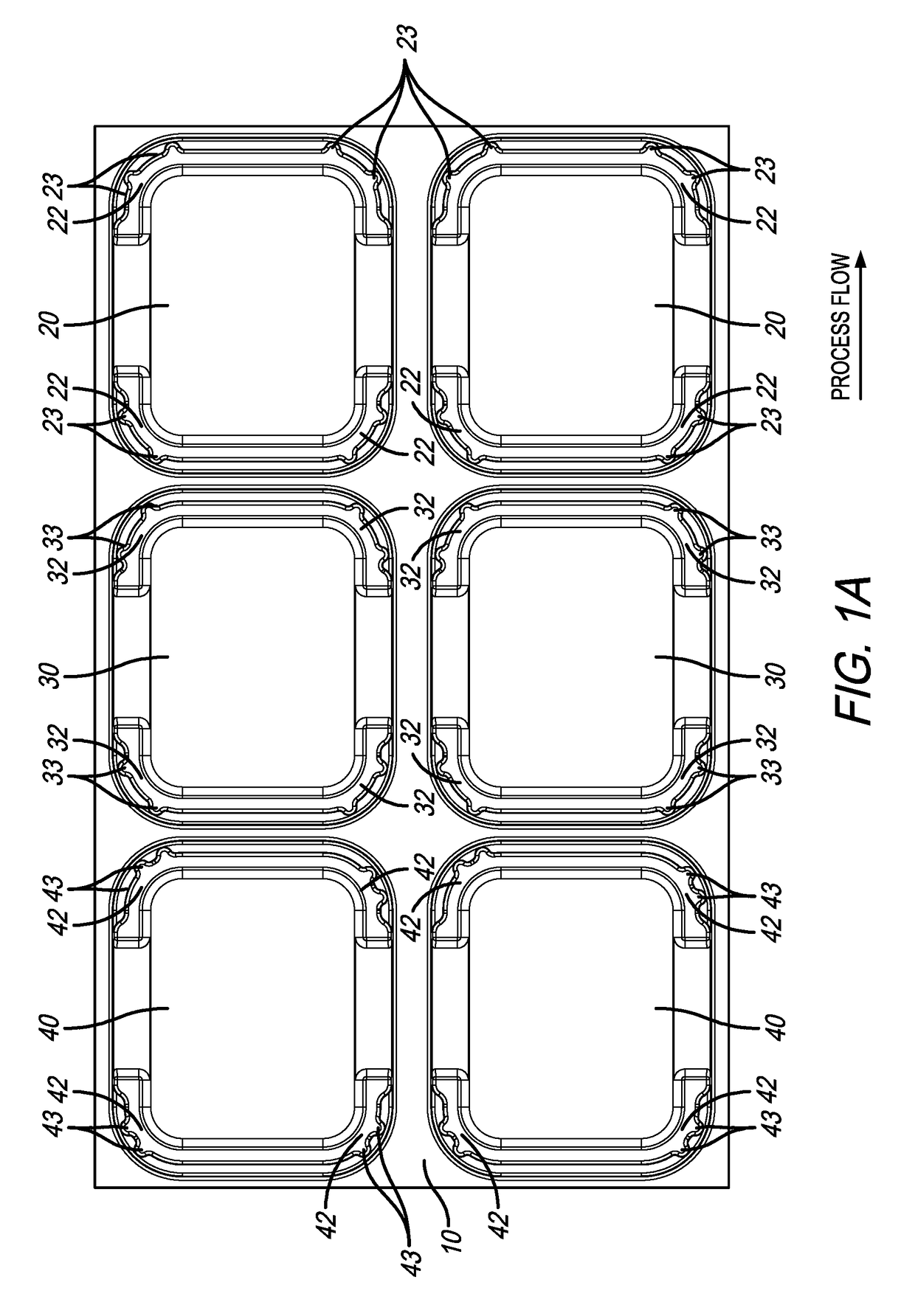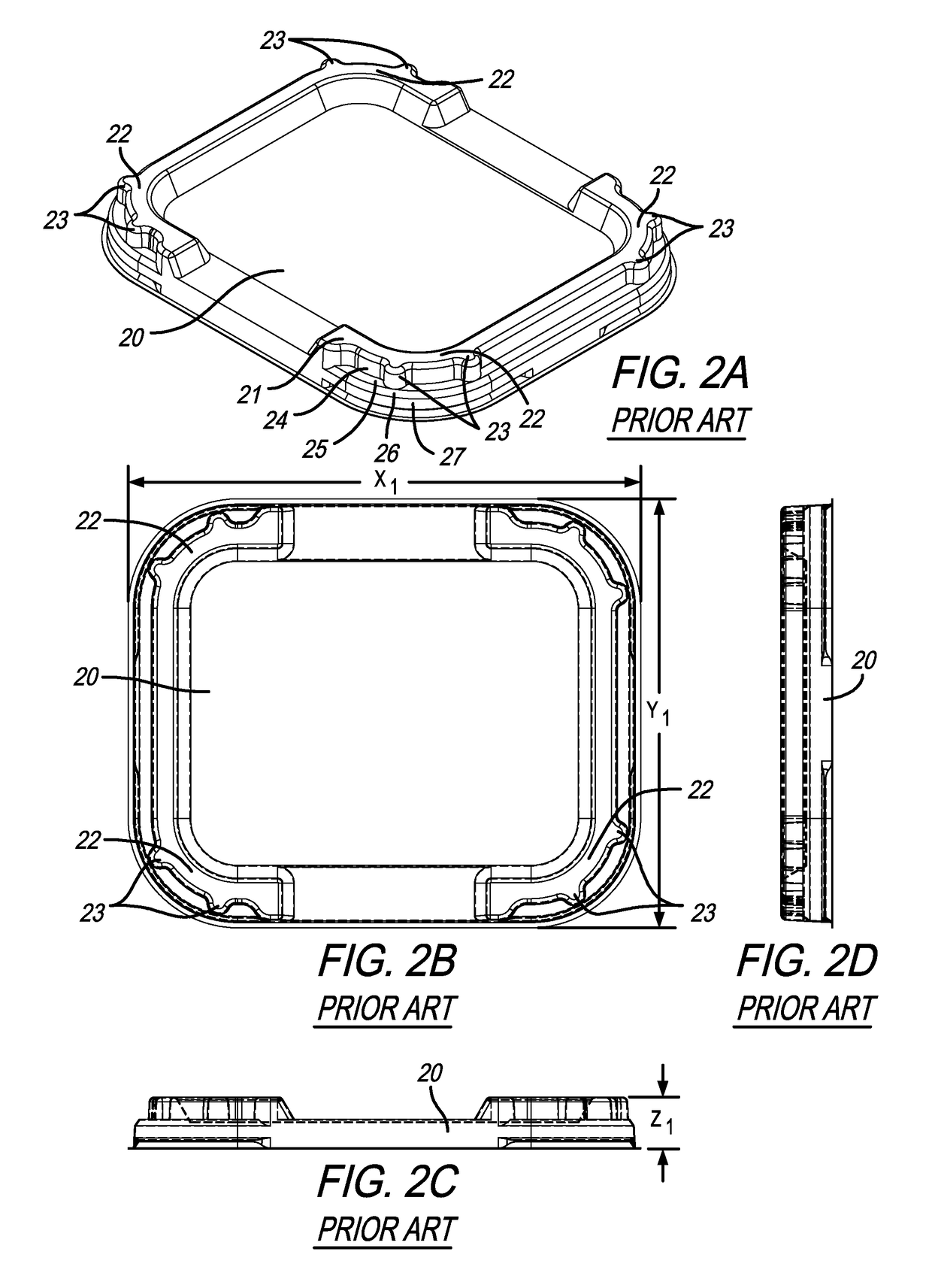Lid with hidden stacking
- Summary
- Abstract
- Description
- Claims
- Application Information
AI Technical Summary
Benefits of technology
Problems solved by technology
Method used
Image
Examples
Embodiment Construction
[0033]FIGS. 1A-1B provide plan views of a portion of a prior art sheet 10 of thermoformed lids 20, 30&40, with FIG. 1B the same as FIG. 1A except for dotted lines added to show the approximate locations of the cuts 12 used to separate the individual lids 20, 30, &40. As this portion of a prior art sheet 10 moves in the direction of process flow shown in FIGS. 1A & 1B, after the parts come off the line they will ordinarily form a stack 14 on top of one another with lid 20 on the bottom, followed by lid 30 in the middle, and lid 40 on top as shown in FIGS. 3A-3B.
[0034]As shown in FIGS. 2A-2D, the first prior art lid 20 has an upper periphery 21 with four stacking areas 22 located at the corners. Each stacking area 22 has a convex protrusion or lug 23 that juts or projects outwardly from an upper side wall 24. On each lateral side of the outward-projecting lug 23 is a shelf 25 which extends to a corner 26 and to a lower side wall and periphery 27.
[0035]Similarly, as shown in FIGS. 2E-2...
PUM
 Login to View More
Login to View More Abstract
Description
Claims
Application Information
 Login to View More
Login to View More - R&D
- Intellectual Property
- Life Sciences
- Materials
- Tech Scout
- Unparalleled Data Quality
- Higher Quality Content
- 60% Fewer Hallucinations
Browse by: Latest US Patents, China's latest patents, Technical Efficacy Thesaurus, Application Domain, Technology Topic, Popular Technical Reports.
© 2025 PatSnap. All rights reserved.Legal|Privacy policy|Modern Slavery Act Transparency Statement|Sitemap|About US| Contact US: help@patsnap.com



